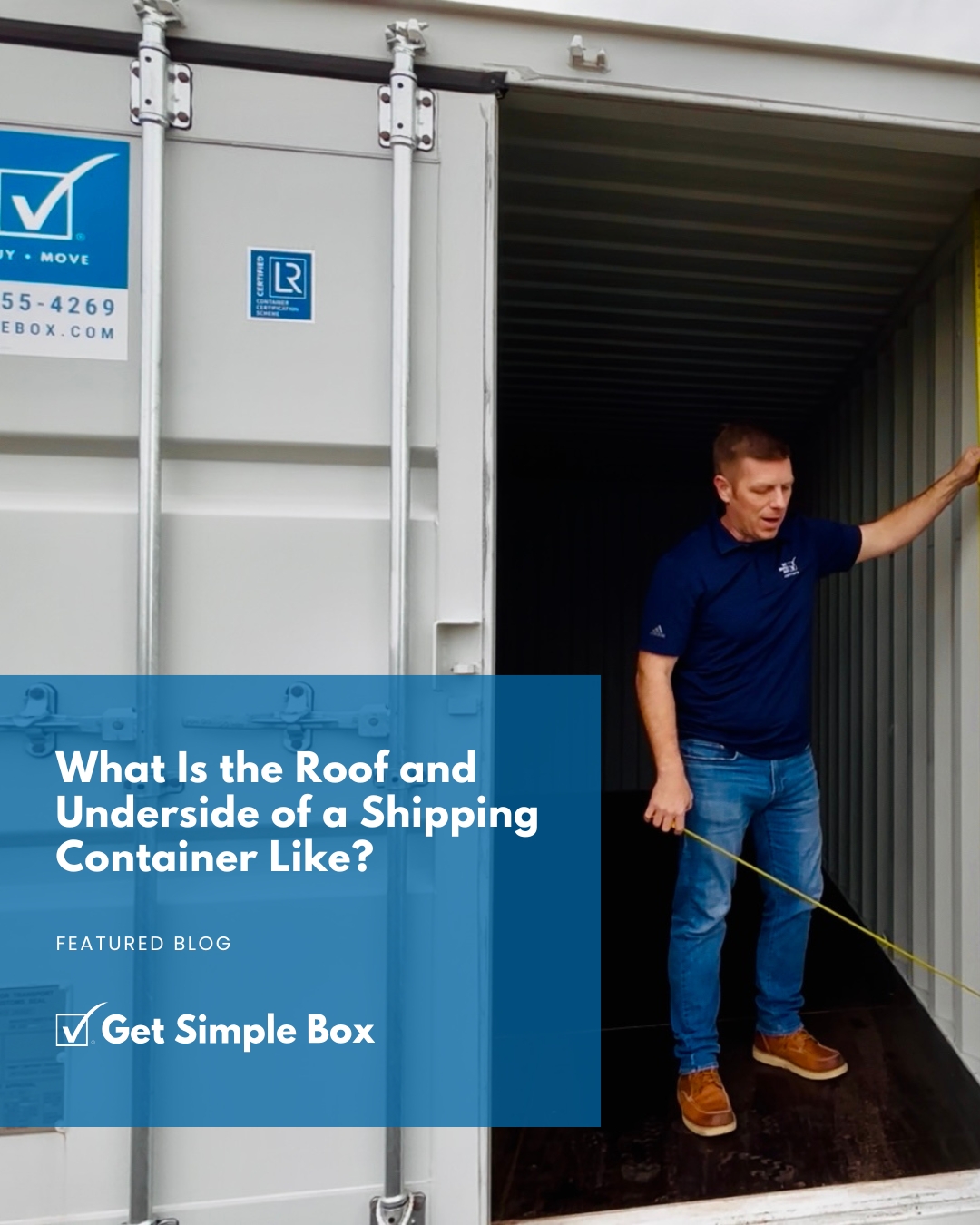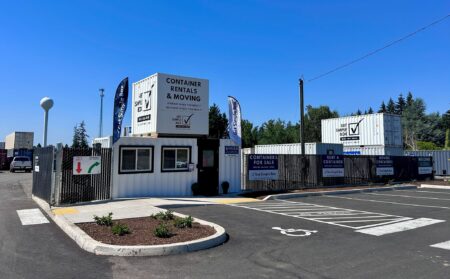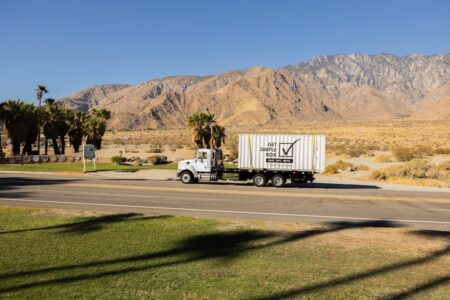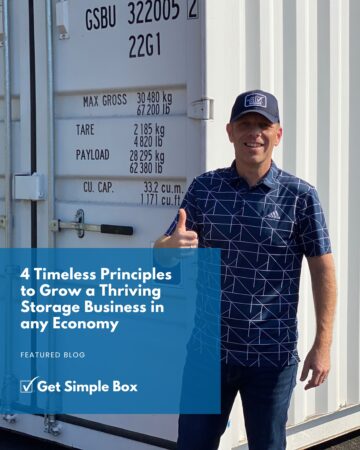
What Is the Roof and Underside of a Shipping Container Like?
Shipping containers are built to be strong, secure, and long-lasting. But when people ask about the shipping container roof and underside, they’re usually wondering about two important things:
- How strong are they, really?
- How do they help protect what’s inside the container?
In this guide, we’ll take a closer look at the design of the shipping container roof and underside, and explain how these two parts work together to handle:
- Tough weather, like rain and snow
- Heavy loads inside and out
- Daily use in storage yards, on job sites, and at your home
Whether you’re thinking about renting a container for a project or buying one for long-term storage, understanding these parts of the container is key to making the right choice. We’ll share expert insights, tips from real-world experience, and a few smart ways to make your container last even longer.
Renting a Container is a great option if you want flexibility while still protecting your items from rain, wind, and even snow. Let’s start at the top — with the roof!
Table of Contents
Understanding the Shipping Container Roof Structure
The shipping container roof structure plays an important role in keeping the contents safe and dry. Although it’s made of strong steel, it’s not as tough as other parts of the container. Many people think the roof can handle anything because it’s metal, but most of the container’s strength actually comes from the corner posts and the corrugated steel walls.
Corrugated Steel Design for Strength and Drainage
The shipping container roof structure is built from corrugated steel panels, which means it has raised ridges running across the surface. These ridges, or “corrugations,” run side-to-side across the short direction of the container. This design helps water flow off the roof quickly, so it doesn’t pool or cause damage.
Our founder, Ross Black, explains, “Unlike the floor, the roof of a container doesn’t have as many cross members supporting it. The roof is slightly bowed outward, which helps water runoff and avoids puddling. Slight bowing of the roof to direct water off the sides and away from the container.” The corrugations and design are important for strength and shipping container drainage.
Containers are built to survive tough conditions at sea, where rain and splashing waves are common. The good news is, even when your container is on land, the shipping container roof is designed to keep water flowing off the container and away from your stored items.

Natural Water Flow Design
The shipping container roof uses a smart design to handle rain. Thanks to the corrugations that run side-to-side, water naturally drains off the roof instead of pooling. The roof is also slightly bowed upward in the middle, helping water flow toward the edges.
This design works really well, especially on new one-trip containers that haven’t been damaged or dented. Still, it’s always a good practice to place your container on flat ground and clear away leaves or debris that might block water flow. If you need help choosing the best location for your container, check out our Locations page to find a local expert.
Preventing Leaks Through Proper Maintenance
Even with a smart design, it’s possible for leaks to happen — especially with older, used containers. As Ross points out, “We’ve seen used containers, especially lower-grade ‘wind and watertight’ ones, with roofs bowed in and rust accumulating at the seals, causing condensation inside.”
This is why starting with a new container is one of the best ways to avoid issues. But if you’re working with an older container, here’s a pro tip:
If the roof has sagged, you can sometimes use a bottle jack and a 2×4 from the inside to gently push the roof back into shape. After that, be sure to clear off any debris and patch any seams to prevent future water problems.

Weight Limits of a Shipping Container Roof
Many people wonder: can you walk on a shipping container roof? The short answer is yes (but carefully). Keep in mind that the shipping container roof weight limit is designed for lighter use, it’s not meant to hold extremely heavy loads on its own.
At Get Simple Box, we’ve had car dealerships and equipment dealers add steel or small I-beams from one corner post to the other. Then they add cross members to support the tires of a car or equipment they’re displaying. It’s a great way to raise something up and catch attention from passing traffic.
This works because the shipping container roof and underside rely on the corner posts for serious weight support. If you plan to place anything heavy on top, it’s always best to build a platform that shifts the weight to those strong corners.
For reference, if you’re using a 20 ft container, you can learn more about sizing, dimensions, and load limits in our 20 ft Container guide.
Identification Numbers on the Roof
Another smart feature of the shipping container roof is the unit number marking. Each container has a unique serial number, and you’ll often see this number displayed right on the roof. This helps workers in shipping yards and depots quickly identify containers, even when they’re stacked.
Why put a number on the roof? The unit number is duplicated on the top of the roof to make it easier for someone to spot, especially in a container depot. It’s a simple detail, but it keeps operations moving smoothly and reduces mistakes when containers are loaded or moved.

Exploring the Shipping Container Underside
Now that we’ve covered the roof, let’s take a look underneath. The shipping container roof and underside work together to create a strong, weather-resistant structure. While the roof protects from above, the shipping container underside is all about providing solid support from below.
Heavy-Duty Cross Members for Floor Support
The shipping container underside is built with heavy-duty steel beams called cross members. These beams are spaced about 12 inches apart and run the full width of the container — just like the corrugations on the roof run side-to-side. This design keeps the floor strong and evenly supported.
As Ross explains, “The container underside includes heavy-duty steel cross members, spaced about 12 inches apart, providing the primary floor support structure.” This means the shipping container floor support is tough enough to handle everything from household items to construction tools and equipment.
If you’re planning to use your container for a move or job site, you’ll appreciate this solid design. Our Moving Containers guide covers how this strong floor structure makes loading and unloading easier and safer.
Marine-Grade Plywood Flooring
On top of the steel cross members, you’ll find thick marine-grade plywood. Newer containers use plywood that’s about 28mm thick — more than twice as thick as typical residential plywood, which is usually around 12mm. This extra thickness adds strength and durability, especially when you’re storing heavy items.
Ross shares, “Marine-grade plywood floors are about 28mm thick, which is significantly thicker than typical residential plywood. This adds strength and durability for heavy loads.” Even in wet or coastal environments, this rugged floor design helps extend the life of the container.
Together, the shipping container floor support and underside design make the container a reliable solution for storage and transportation. Plus, when paired with the strength of the shipping container roof and underside, your container stays sturdy from top to bottom.

Forklift Pockets and Container Mobility
The shipping container roof and underside are built for strength, but the container also needs to be easy to move. That’s where forklift pockets come in. These special openings in the shipping container underside make it possible to lift and transport the container with heavy-duty forklifts.
Forklift Pocket Placement and Dimensions
On a typical 20 ft container, the forklift pockets are placed with careful spacing to ensure balance and safety. The outside edge of each pocket is about 6 feet from the end of the container, and the pockets themselves are set 6 feet apart from each other. Each pocket measures approximately 14 inches wide by 4.5 inches tall, and they go all the way through the container underside, making it easier for forklift blades to slide through.
It’s a small detail, but it makes a big difference when loading, unloading, or repositioning containers at a yard or job site. If you’re preparing for a delivery, our Container Delivery guide has helpful tips on how to get your site ready.
Not all Shipping Containers have Forklift Pockets
It’s important to know that not all containers have forklift pockets. Especially with older, used containers — built strictly for ocean shipping — forklift pockets are often missing. These containers were designed to be moved by heavy cranes, and adding forklift pockets would have meant:
- Higher manufacturing costs for something not needed in shipping ports.
- Increased risk of improper handling by someone using the wrong equipment to try and move a fully loaded container.
Pro Tip: “One-trip containers were designed with the end user in mind — a renter of portable storage at a home or job site, or a property owner looking to buy a container — so the forklift pockets add extra functionality and make it easier to handle them when they are empty or lightly loaded.” — Ross, Get Simple Box
If you’re looking for flexibility and easier handling, a new one-trip container is often the best choice. These containers not only include forklift pockets, but they also come with the added benefit of better resale value and improved condition.
And when combined with the durable design of the shipping container roof and underside, you’ll have a container that’s both strong and simple to move, whether you’re relocating to a new site or storing equipment long-term.
Need help choosing the right container? Our team can help — check out our Container Delivery guide to see how we make the process easy from start to finish!

Corner Posts: The Hidden Strength of Shipping Containers
While the shipping container roof and underside do important work to protect and support your container, it’s really the corners that carry the heavy load. Corner castings are the unsung heroes of container design. These steel structures at each corner make it possible to safely lift, stack, and secure containers for transport or storage.
Structural Role of Corner Castings
There are eight corner castings on every container — one at each top and bottom corner. When containers are lifted by cranes, stacked at ports, or secured on a truck, it’s these castings that take the weight. Even though the shipping container roof is made of strong steel, it’s not designed to carry the weight of stacked containers. The corner castings do the heavy lifting, transferring the weight through the shipping container underside and directly to the ground or transport surface.
“Basically every part of a Shipping Container is built tough – but the core strength of a container comes from the four corner posts.” -Ross Black, CEO Get Simple Box
That’s why, if you ever need to place something heavy on the container roof — like a vehicle on display — you should build a platform that shifts the weight to the corner castings for safety.
Choosing the right container also matters. At Get Simple Box, we focus on offering cargo-worthy or better containers, which means they’re built strong and ready for real-world use. To see the difference, visit our About Get Simple Box page and learn how we help you pick the best container for your needs.
By relying on corner castings and strong corner posts, the shipping container roof and underside work together to create a safe and durable structure, ready to take on heavy loads and tough conditions.

Questions and Answers
1. What is the underside of a shipping container made of?
The underside of a shipping container is made of heavy-duty steel cross members and a thick marine-grade plywood floor, about 28mm thick. At Get Simple Box, our containers also have a protective coating on the underside to resist moisture and prevent rust.
2. How strong is the roof of a shipping container?
The roof of a shipping container is strong enough to handle light loads like inspections or clearing debris. However, heavy weight should always be supported by the corner posts, not the roof panels. At Get Simple Box, we recommend building a platform to transfer weight to the corners if you plan to place heavy items on top.
3. Why do some shipping containers not have forklift pockets?
Older containers were designed for international shipping and were always moved by crane. Forklift pockets weren’t needed and would have added extra cost. Get Simple Box mostly carries new one-trip containers, which include forklift pockets for easier handling at homes or job sites.
4. Where are the forklift pockets located on a shipping container?
On a typical 20-foot container, the forklift pockets are about 6 feet from the ends of the container and are spaced about 6 feet apart from each other. These openings run all the way through the underside, making it easier to move the container safely.
5. How does water drain off a shipping container roof?
The roof has side-to-side corrugations and a slight upward bow that help water flow off the sides naturally. There is no active drainage system, so it’s important to keep the roof clear of debris to maintain good water flow.
6. What are corner castings on a shipping container?
Corner castings are the strong steel components at each corner of the container. They’re designed for lifting, stacking, and securing containers during transport. All the major weight is carried through these points.
7. How thick is the floor of a shipping container?
The floor of a shipping container is typically about 28mm thick, made from durable marine-grade plywood. This is more than twice as thick as standard residential plywood, making it strong enough for heavy loads.
Why the Roof and Underside Matter for Your Container
When it comes to choosing the right container, understanding the shipping container roof and underside is more important than most people realize. These aren’t just simple steel parts — they’re carefully designed systems that work together to:
- Protect your items from the elements
- Support heavy loads safely
- Keep your container strong for years to come
Strong from Top to Bottom
The shipping container roof uses corrugation and a slight bow to shed water quickly, helping prevent leaks and standing water. But as Ross explains:
“Unlike the floor, the roof doesn’t have as many cross members supporting it. The strength comes from the corner posts and the corrugation in the wall panels.”
If you’re thinking of placing heavy items on top, like displays or equipment, be sure to use a platform that transfers weight to the corners — where the container is built to carry it.
On the other side, the shipping container underside is equally important. With its steel cross members and thick marine-grade plywood floors, the shipping container floor support is designed to carry heavy loads with ease.
Add to that:
- Forklift pockets (on most newer containers) for easy handling
- Strong corner castings to support stacking and transport
- Durable materials built for long-term use
And you’ve got a container that’s both tough and versatile.
Pro Tip for the Best Value
“I always recommend people go with new one-trip containers,” says Ross. “They look better, last longer, and even if you only plan to use it for a couple of years, they hold their value much better.”

At Get Simple Box, we help you choose the best option by letting you hand-pick your container right from our yard. That way, you get exactly what you need — with no surprises.
If you’d like to see more details, don’t miss the video and photos we’ve included with this post! You’ll get an up-close look at the shipping container roof and underside, including forklift pockets, cross members, and more.
Ready to get started? Visit our Locations page to connect with a Get Simple Box team member near you!
Share this Post:
Related Posts
Get Simple Box Expands Salem Yard to Better Serve Local Moving and Storage Needs Salem, OR — Get Simple Box
How to Get the Best Deal on a Shipping Container If you’re searching for portable storage containers in Glendale, AZ,
Common Portable Storage Problems (and What You Can Do About Them) Ever worried about renting a mini-storage unit or portable
How to Get the Best Deal on a Shipping Container If you’ve ever searched for a 20 ft shipping container
Grow Your Storage Business: 4 Timeless Principles for Long-Term Success in Any Economy Our CEO, Ross Black, was recently invited





